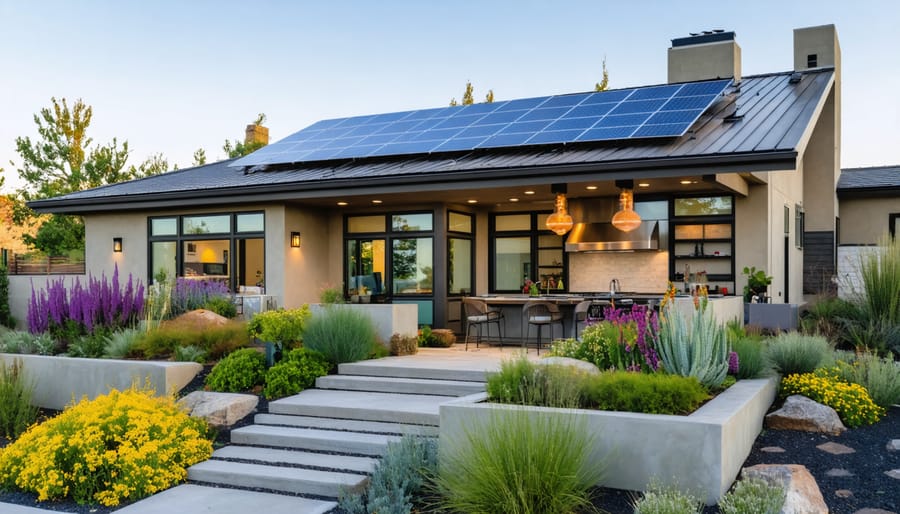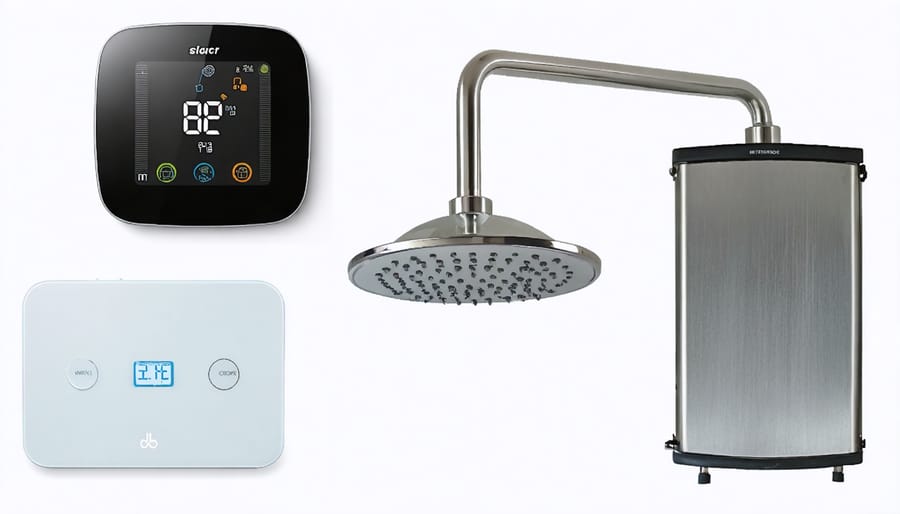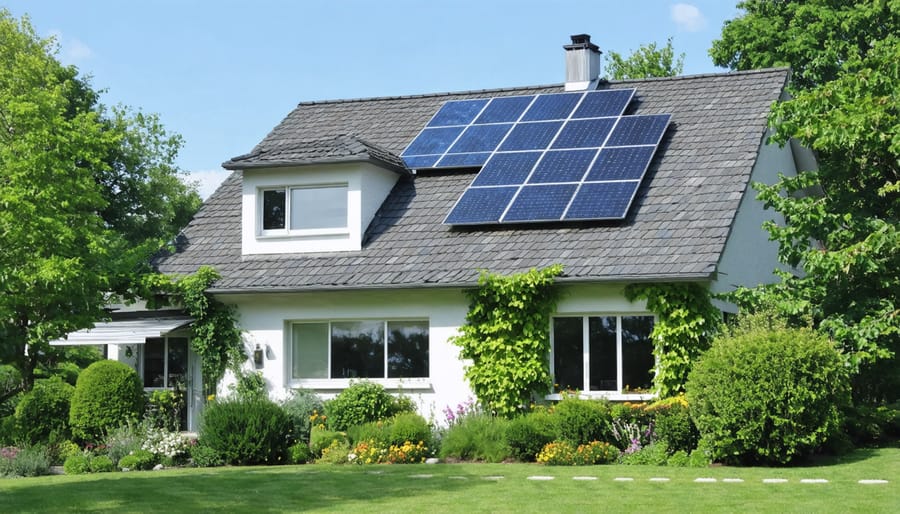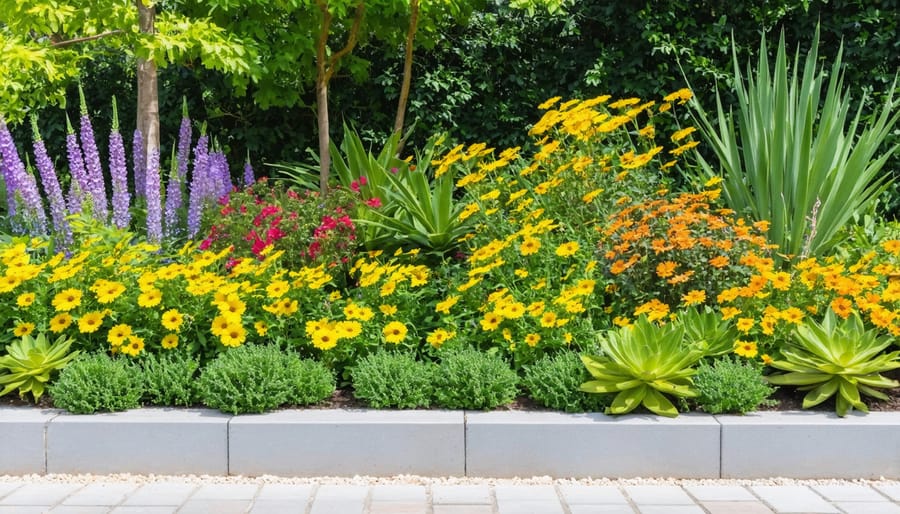
10 Eco Friendly Home Features That Save Money and the Planet
Reduce your environmental impact and utility bills with these eco-friendly home features. Install solar panels to generate clean, renewable energy for your home. Upgrade to Energy Star certified appliances which use 10-50% less energy than standard models. Green your space with low-VOC paints, reclaimed wood, and organic fabrics to improve indoor air quality. Invest in a smart thermostat to automatically optimize heating and cooling, potentially saving 10-15% on energy costs.
Energy Efficient Appliances
Energy Star certified appliances can significantly reduce your home’s energy consumption and environmental footprint. These appliances, which include refrigerators, dishwashers, washing machines, and more, have been independently verified to use 10-50% less energy than standard models. By upgrading to Energy Star appliances, you not only save on utility bills but also decrease your home’s carbon emissions. Additionally, many Energy Star appliances offer enhanced features and improved performance, making them a smart investment for eco-conscious homeowners. When shopping for new appliances, always look for the Energy Star label to ensure you’re getting the most energy-efficient option available. Over the lifespan of these appliances, you can save hundreds of dollars on energy costs while doing your part to protect the environment. Replacing old, inefficient appliances with Energy Star certified models is a simple yet effective way to create a more sustainable and cost-effective home.

Programmable Smart Thermostats
Programmable smart thermostats are a high-tech way to optimize your home’s energy usage and lower your utility bills. These intelligent devices learn your temperature preferences and daily routines to automatically adjust heating and cooling settings for maximum efficiency. Many models allow you to control the thermostat remotely via smartphone apps, so you can ensure your home is always at the perfect temperature while avoiding wasteful energy consumption. Some advanced smart thermostats even monitor local weather conditions and your home’s unique characteristics to make real-time adjustments for optimal comfort and savings. By reducing unnecessary heating and cooling, programmable smart thermostats can significantly cut your energy usage and costs over time. Plus, the increased efficiency helps reduce your carbon footprint for a greener home. While smart thermostats require an initial investment, the long-term savings and convenience make them a smart choice for eco-conscious homeowners looking to upgrade their HVAC systems.
Low-Flow Fixtures
Low-flow fixtures are an easy and effective way to reduce water consumption in your home. Installing low-flow faucets, showerheads, and toilets can significantly cut down on water usage without sacrificing functionality or comfort. Low-flow faucets typically use 1.5 gallons per minute (GPM) or less, compared to standard faucets that use 2.2 GPM or more. Similarly, low-flow showerheads use 2.0 GPM or less, while traditional showerheads can use up to 5 GPM. Low-flow toilets use 1.6 gallons per flush (GPF) or less, whereas older toilets can use 3.5 GPF or more. By making these simple upgrades, you can save thousands of gallons of water per year, reducing your water bills and environmental impact. Plus, many modern low-flow fixtures offer improved performance and sleek designs that enhance your bathroom’s aesthetic appeal. Investing in low-flow fixtures is a smart choice for eco-conscious homeowners looking to conserve water and save money.
Solar Panels
Installing solar panels on your home is an excellent way to harness renewable energy, reduce your carbon footprint, and potentially save money on electricity bills. Solar power systems convert sunlight into clean, usable electricity without emitting greenhouse gases. While the upfront cost of solar panels can be significant, many governments offer tax credits, rebates, and incentives to make the transition more affordable. Over time, the energy savings can offset the initial investment. Our comprehensive solar panel guide provides a step-by-step approach to assessing your home’s solar potential, choosing the right system, and maximizing its efficiency. By embracing solar energy, you not only contribute to a greener future but also increase your home’s value and energy independence. With advancements in solar technology and growing environmental awareness, now is an ideal time to consider this eco-friendly home feature.

Sustainable Building Materials
When building or renovating an eco-friendly home, the materials you choose can make a big difference. Bamboo is a fast-growing, highly renewable resource that’s incredibly versatile – it can be used for flooring, cabinetry, and even wall panels. Cork is another sustainable option, harvested from tree bark without harming the tree itself. It’s naturally insulating, fire-resistant, and great for soundproofing. Reclaimed wood adds character and history to your home while keeping perfectly good lumber out of landfills. Look for reclaimed beams, floorboards, and architectural elements at salvage yards or specialty suppliers. Other green building materials include recycled steel, precast concrete made with industrial waste, and insulation made from recycled denim or sheep’s wool. By choosing sustainable materials, you’re reducing your home’s carbon footprint and supporting responsible forestry and manufacturing practices. Plus, many of these materials are naturally beautiful and durable, ensuring your eco-friendly home will look great for years to come.
Efficient Windows and Doors
Efficient windows and doors are essential for creating an eco-friendly home. Proper insulation is key to maintaining a comfortable indoor temperature while minimizing energy waste. Look for windows with double-pane glass, which creates an insulating air pocket between the panes to reduce heat transfer. Weather stripping around doors and windows helps seal gaps and prevent drafts, further improving energy efficiency. When selecting new windows and doors, opt for materials with low thermal conductivity, such as wood or vinyl, to minimize heat loss. Additionally, consider the orientation of your windows; strategically placed windows can harness natural light and warmth from the sun, reducing the need for artificial lighting and heating. By investing in efficient windows and doors, you can create a more comfortable living space while reducing your home’s carbon footprint and lowering your energy bills in the long run.
Natural Landscaping
Natural landscaping with native, drought-tolerant plants offers numerous benefits for eco-friendly homes. By choosing plants that are well-adapted to the local climate, homeowners can significantly reduce their water usage for irrigation. These hardy plants have evolved to thrive in the region’s natural rainfall patterns, requiring less frequent watering and maintenance. In addition to conserving water, native landscaping supports local biodiversity by providing habitat and food sources for birds, pollinators, and other wildlife. The deep root systems of these plants also help to prevent soil erosion and improve overall soil health. By embracing the beauty of native flora, homeowners can create a stunning, low-maintenance landscape that seamlessly blends with the surrounding environment. Not only does this approach save time and money on upkeep, but it also contributes to the preservation of the area’s unique ecological heritage.

Rainwater Collection Systems
Rainwater collection systems are an innovative way to reduce your home’s water usage for irrigation and landscaping. By installing gutters, downspouts, and storage tanks, you can capture rainwater runoff from your roof and direct it for later use on your lawn, garden, or outdoor cleaning tasks. A 1000 square foot roof can yield over 600 gallons of water from just one inch of rainfall! Not only does harvesting rainwater lower your utility bills, it also eases the burden on municipal water supplies and treatment facilities. When setting up your system, be sure to check local regulations on collection and to properly filter the water for its intended use. With a rainwater collection system, you’ll enjoy a lush green yard while knowing you’re conserving a precious resource. It’s an eco-friendly upgrade that’s as practical as it is responsible.
Eco Friendly Insulation
When it comes to eco-friendly insulation options, there are several innovative materials to consider. Recycled denim is a popular choice, as it’s made from post-consumer blue jeans and requires significantly less energy to produce than traditional insulation. Another sustainable option is sheep’s wool, which is naturally fire-resistant, moisture-wicking, and can help regulate indoor temperatures year-round. For those seeking high-performance insulation, spray foam is an excellent choice. It expands to fill every nook and cranny, creating an airtight seal that prevents drafts and enhances energy efficiency. Spray foam insulation also has a higher R-value per inch compared to many other materials, meaning it provides superior insulation in a thinner layer. Whichever eco-friendly insulation you choose, you’ll be taking a significant step towards creating a greener, more energy-efficient home while enjoying increased comfort and potentially lower utility bills.
Non-Toxic Paints and Finishes
When painting or refinishing your home, choosing non-toxic, low-VOC (volatile organic compound) products can significantly improve indoor air quality. VOCs are harmful chemicals released into the air from traditional paints, varnishes, and finishes. Exposure to VOCs can cause eye, nose, and throat irritation, headaches, nausea, and even damage to the liver, kidneys, and central nervous system.
Opting for low-VOC or natural paints reduces these health risks and creates a safer living environment. These eco-friendly alternatives are made with natural ingredients like plant oils, resins, and minerals, minimizing the release of toxic fumes. They also offer excellent coverage and durability, ensuring your walls look beautiful for years to come.
When shopping for paints and finishes, look for products labeled “low-VOC,” “zero-VOC,” or “natural.” By making this simple switch, you’ll contribute to a healthier home and environment while still achieving the desired aesthetic for your space.
Conclusion
By incorporating eco-friendly features into your home, you can enjoy significant benefits for both your wallet and the planet. From reducing energy and water bills to minimizing your carbon footprint, these sustainable upgrades offer a wide range of advantages. Even small changes, like switching to LED bulbs or installing low-flow fixtures, can make a noticeable impact over time. As you embrace more environmentally conscious choices in your home, you’ll contribute to a greener future while also creating a healthier, more comfortable living space for your family. Remember, every step towards sustainability matters, and by making your home more eco-friendly, you’re becoming part of the solution to our global environmental challenges.
